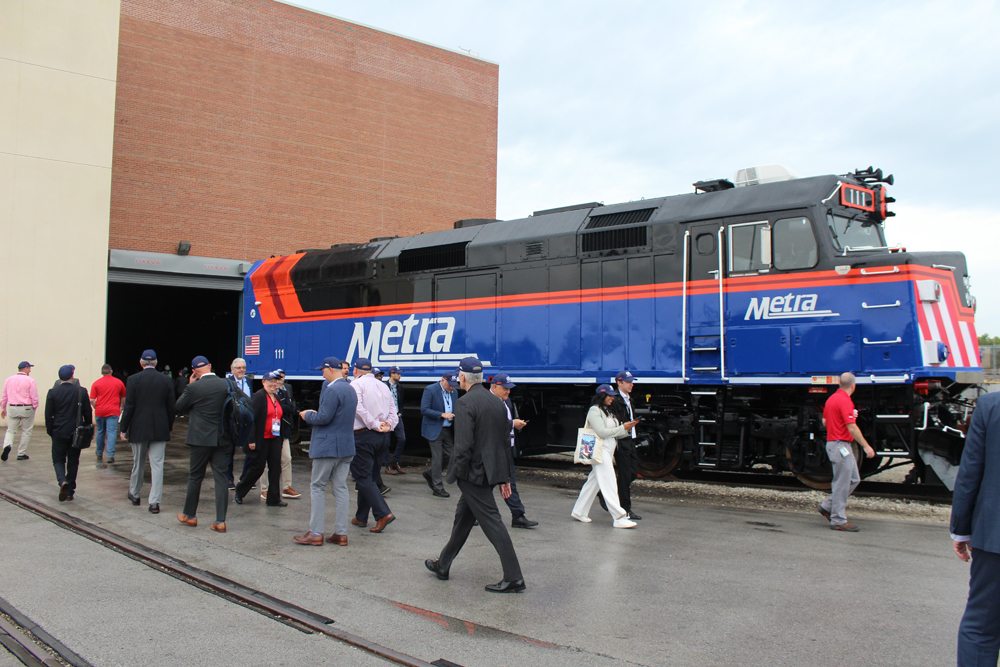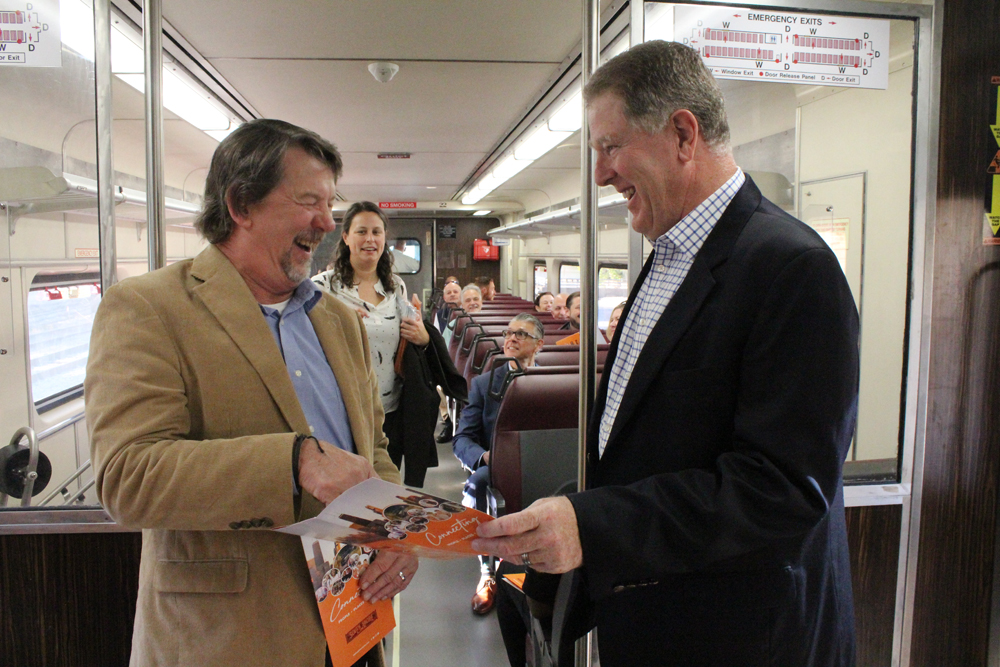Urban rail

CHICAGO — Representatives from a wide range of U.S. rail operations gathered in the Windy City this week to compare ways in which systems are attempting to capture customers who may have shunned their trains prior to the Covid-19 pandemic.
Highlights of the three-day confab included a tour of South Shore Line projects hosted by Northern Indiana Commuter Transportation District General Manager Mike Noland and an extensive “behind the scenes” visit to Metra’s 47th Street car shop and 49th Street locomotive rebuild facility arranged by Metra CEO Jim Derwinski.

But the meeting’s main focus was to cross-pollinate ideas on how to grow ridership.
“We’ve reached a new baseline. Let’s understand who our new riders are going to be,” urged Caltrain Executive Director Michelle Bouchard. She led a panel of presenters on a session appropriately titled, “Becoming the transportation provider of choice in a changing landscape.” The stakes couldn’t be higher for the San Francisco-Silicon Valley system. It has been undergoing a massive conversion since 2017 to electric propulsion based on five-day per week ridership.
The consensus of Bouchard and panelists from Philadelpha’s SEPTA, San Diego’s North County Transit District, Washington D.C.’s Virginia Railway Express, and Los Angeles’ Metrolink is to embark on a customer acquisition strategy that involves consumer outreach and offering frequent off-peak service.
“The easy money — monthly pass riders — went away,” explained Metrolink CEO Darren Kettle, “but now we’re seeing that suburb-to-suburb trips comprise 51% of our ridership. The commuter peak still exists, though cross-line travel has increased.” Metrolink recently restored the number of trains it operated pre-pandemic to the far-flung Antelope Valley Line to Lancaster, Calif. “But we’re changing where we are putting those trains, including late-night,” Kettle added. His agency continues to plan for the 2028 Los Angeles Olympics, which the city wants to be car-less. “We will have to figure out how to handle the equivalent of 9 Super Bowls for 16 days,” he says.
Both NCTD’s Katie Persons and SEPTA’s Jody Holton stressed the need to develop what Persons characterizes as “trip planning inspiration,” a reason to travel, and experimentation with different fare plans coupled with promotion to entice new riders.
With Covid-19 supplemental grants ending within the next few years, Bouchard pointed out frequencies spread more evenly throughout the day are much more efficient to operate because crews are kept busy. “The ‘fiscal cliff’ and providing more frequent service aren’t at odds,” she said.
There were also discussions of solving the “first-mile/last-mile” seamless travel challenge and negative perceptions of safety and cleanliness that may keep customers in their cars.
As NICTD’s Mike Noland said, “We need to give people better options through increased frequency rather than having them drive and pay for parking.”














The Shelburne Falls and Colrain Street Railway (1897-1927) built a park midway between both towns so that it could generate weekend traffic. It was put out of business when the automobile road was widened and paved over the tracks.
Mayor Pete , don’t see him attendance.
His Iraq War unit had a get-together and visited unit members in long-term rehabilitation.
I think NCTD’s Katie Persons and SEPTA’s Jody Holton are on the right track about the need for suburban rail to promote reasons to travel on their trains. For ideas I would suggest a subscription to Brightline’s emails. Almost every day they suggest a new reason to ride Brightline. Ball games, music events and other activities are promoted. The “last mile” problem is often addressed too for perspective patrons.
I rode Brightline last year and was impressed with their whole operation. I certainly hope they are successful with the whole line to Orlando now open.
This is one area where passenger rail travel can suceed and take off and even grow and expand. While long distance train travel is at best just getting by or struggling to grow or add new customers, there will always be a need for commuter rail and short haul and short distance rail travel between suburbs and inner city locales. This is where we we should see and will experience growth and expansion in passenger rail travel. As the folks at Brightline have been saying, Distances where it is too short to fly and too long to drive this is where rail travel has a market and niche to flourish, grow and survive. The roads and highways in our nation’s cities and suburbs are just saturated and dangerously overcrowded with too many automobiles and adding morehighways or expanding exisiting ones with more lanes or levels doesn’t make sense. Instead of solving a problem, another problem is being created as to where to put all these cars. Eventually people will realize that train travel for short distances and commuting is far cheaper and less stressful than driving back and forth on a daily basis as well as tiring, time consuming and stressful. For example a typical commuter or short haul passenger train carrying anywhere from 150 to 200 passengers means 150 to 200 less cars on the highway and not only making it safer for folks that do drive and have to drive but also helping our environment and making our atomosphere more eco-friendly and healthier to breathe in.
Joseph C. Markfelder
I’ll watch with great interest how Kettle and his staff integrate Metrolink into LA28 transportation planning. Other than the Anaheim stop, which is not too far from Honda Center, I can’t think of any planned Olympic venue that’s proximate to the Metrolink network.
Cal State LA was the field hockey venue in 1984 but I don’t think that’s the plan this go-around.
Trains covered the progress of the Brightline construction pretty closely, but not so much on the NICTD’s brand new Westlake route. Just the street closures in Michigan City.
Perhaps Steve Smedley could make a small jaunt across the state line over to Dyer and work his way up the new ROW. Lots of new bridges and new rail being laid right now. One spot has a bridge being built and the old prior rail crossing is still visible in the pavement.
He probably still can’t believe there’s construction for a passenger rail project going on in
INDIANA. The state that killed the”Amtrak Hoosier State” train.